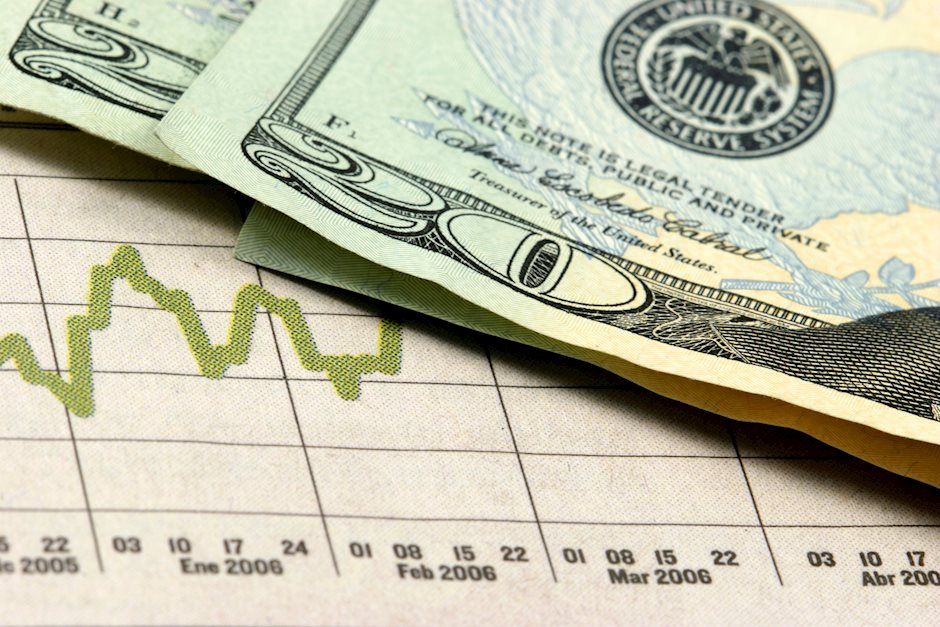US Dollar battles with key level ahead of PCE figures
- The DXY Index sees gains, trades slightly below the 200-day SMA.
- Consumer Spending remained steady in Q4, while GDP grew at a faster rate than expected.
- Markets continue to adjust their expectations.

The US Dollar (USD) DXY index has traded at 103.55 on Thursday, representing 0.30% gains following the release of key economic activity as the case of nearer-term rate cuts by the Federal Reserve (Fed) continues to lose relevance.
The US economy yet again demonstrates resilience as shown in the strong Q4 GDP growth of 3.3%. The Federal Reserve's aggressive hikes have succeeded in moderating inflation without causing significant economic pain. Despite indicators of slowing economic momentum, such as lower household saving rates and declining job openings, the overall robust output has boosted market confidence.
Daily Digest Market Movers: US Dollar finds a lift following strong Q4 GDP figures
- The Real Gross Domestic Product (GDP), released quarterly by the US Bureau of Economic Analysis, grew in Q4 at an annualized rate of 3.3%, surpassing the expected 2% but below the previous quarter’s reading of 4.9%.
- Personal Consumption Expenditures (PCE) (QoQ) came in at 1.7% matching expectations as well as the core measure, which printed at 2%.
- For the Federal Reserve (Fed), these economic activity figures may present a threat to their battle against inflation, which could make them delay the start of the easing cycle.
- The CME FedWatch Tool shows that the market's expectations for the start of the easing cycle have shifted to May as the odds of a cut in March now stands near 42%.
Technical Analysis: DXY bulls step in and regain the 200-day SMA
The indicators on the daily chart are reflecting a relatively neutral stance with a slight bullish bias. The Relative Strength Index (RSI) is showing a positive slope in positive territory. This typically signals upward momentum, indicating that buying pressure is currently stronger.
The Moving Average Convergence Divergence (MACD) indicator is exhibiting flat, green bars, suggesting that the previous upward momentum is pausing but that buyers are still present in the market. Typically, a flat MACD in positive territory is often seen as a consolidation phase before the next upward move.
Looking at the Simple Moving Averages (SMAs), the pair is holding above the 20-day and 200-day SMAs while staying below the 100-day SMA. This demonstrates a mixed picture, but the positioning above the major 200-day SMA emphasizes the long-term bullish bias, indicating the bulls are still holding some dominance.
Support Levels: 103.50 (200-day SMA), 103.00, 102.80, 102.60 (20-day SMA).
Resistance Levels: 103.70, 103.90, 104.00.
Inflation FAQs
What is inflation?
Inflation measures the rise in the price of a representative basket of goods and services. Headline inflation is usually expressed as a percentage change on a month-on-month (MoM) and year-on-year (YoY) basis. Core inflation excludes more volatile elements such as food and fuel which can fluctuate because of geopolitical and seasonal factors. Core inflation is the figure economists focus on and is the level targeted by central banks, which are mandated to keep inflation at a manageable level, usually around 2%.
What is the Consumer Price Index (CPI)?
The Consumer Price Index (CPI) measures the change in prices of a basket of goods and services over a period of time. It is usually expressed as a percentage change on a month-on-month (MoM) and year-on-year (YoY) basis. Core CPI is the figure targeted by central banks as it excludes volatile food and fuel inputs. When Core CPI rises above 2% it usually results in higher interest rates and vice versa when it falls below 2%. Since higher interest rates are positive for a currency, higher inflation usually results in a stronger currency. The opposite is true when inflation falls.
What is the impact of inflation on foreign exchange?
Although it may seem counter-intuitive, high inflation in a country pushes up the value of its currency and vice versa for lower inflation. This is because the central bank will normally raise interest rates to combat the higher inflation, which attract more global capital inflows from investors looking for a lucrative place to park their money.
How does inflation influence the price of Gold?
Formerly, Gold was the asset investors turned to in times of high inflation because it preserved its value, and whilst investors will often still buy Gold for its safe-haven properties in times of extreme market turmoil, this is not the case most of the time. This is because when inflation is high, central banks will put up interest rates to combat it.
Higher interest rates are negative for Gold because they increase the opportunity-cost of holding Gold vis-a-vis an interest-bearing asset or placing the money in a cash deposit account. On the flipside, lower inflation tends to be positive for Gold as it brings interest rates down, making the bright metal a more viable investment alternative.
Author

Patricio Martín
FXStreet
Patricio is an economist from Argentina passionate about global finance and understanding the daily movements of the markets.

















